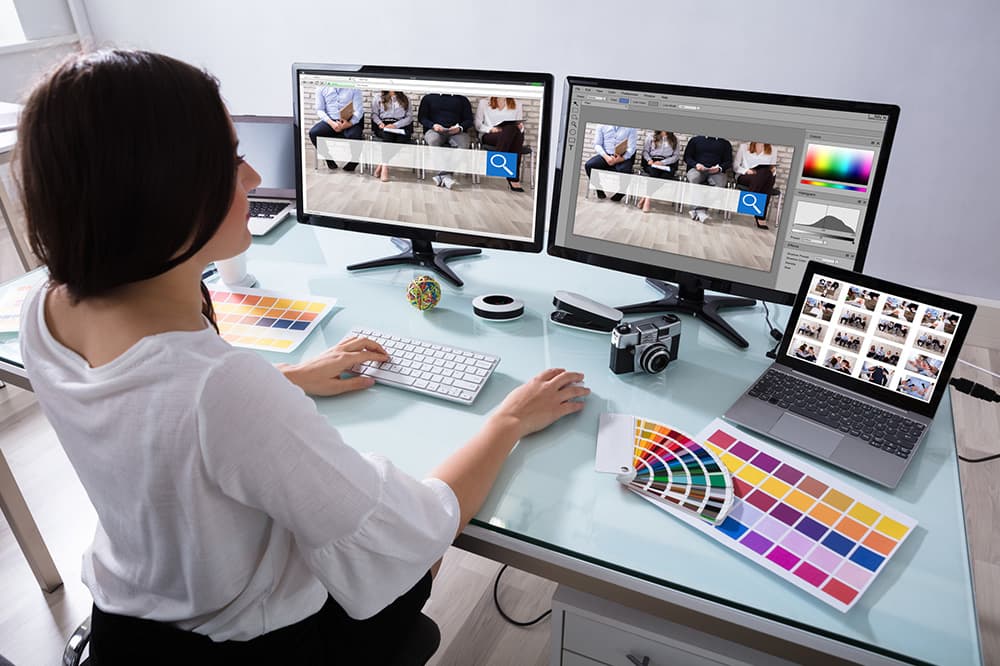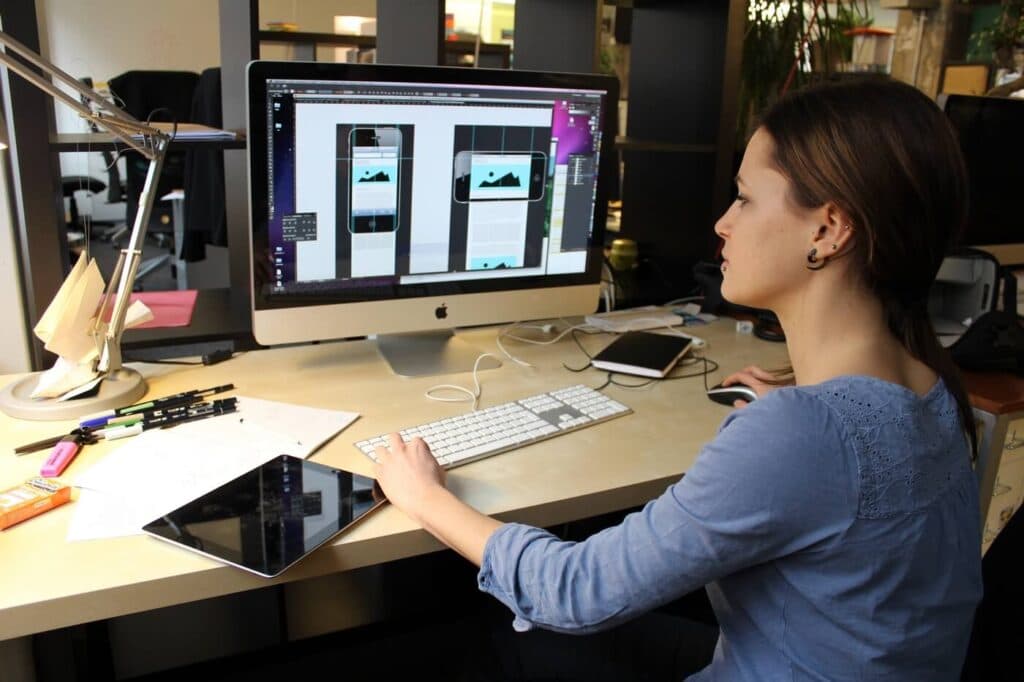Web design is as much about creativity as it is about technical skills, strategic thinking and constant development. In the digital age, web designers play a key role in creating an attractive and functional online presence for brands. But what does it take to not just become a web designer, but to truly excel in this field? Here are five key steps that will help you along the way.
Master the basics of design and web development
Design Principles
Design isn’t just pretty pictures, it’s a thoughtful system that helps the user interact with the product. Start by learning the basic principles of design:
- Composition – the arrangement of elements on a page. Use grids, balance, and alignment to create harmonious layouts. For example, the rule of thirds or the golden ratio can help you structure your content.
- Color theory – colors influence emotions and behavior. Learn to combine them to create contrast and mood. For example, warm colors (red, orange) attract attention and cool colors (blue, green) are calming.
- Typography – Fonts are a powerful communication tool. Learn to choose and combine them, creating a hierarchy through size and weight. For example, headings should stand out and body text should be easy to read.
- Hierarchy – direct the user’s attention with the size, color, and placement of elements. For example, the “Buy” button should be more prominent than secondary links.
Basic HTML and CSS
Even if you don’t plan to become a developer, a basic knowledge of HTML and CSS will help you better understand the design implementation process.
- HTML is the structure of a website. Learn how to create headings, paragraphs, lists and images. For example, the <h1> tag is for the main header.
- CSS is the look and feel of the site. Learn how to set colors, fonts, indents, and animations. For example, you can use CSS to make a button with rounded corners.

UX/UI design
UX (User Experience) and UI (User Interface) are two sides of the same coin. A successful web designer must understand both.
- UX design – focuses on usability. It’s important to understand how users search for information, what their pains and needs are, and how to make navigation intuitive. For example, if a user can’t find the “Buy” button, it’s a UX problem.
- UI-design is the visual part. Here it is important to create attractive and modern interfaces, use animations and interactive elements, and keep an eye on usability and functionality. For example, animation when hovering over a button can make the interface more lively.
Develop soft skills
Communication
Being able to express your ideas clearly and listen to others is an important skill for working in a team. You will interact with customers, developers and marketers, so communication is key. For example, if a customer doesn’t understand your design, you need to be able to explain your solutions.
Time management
Meeting deadlines is a must-have for any professional. Learn to plan your time so you can complete tasks on time without sacrificing quality. Use tools like Trello or Notion to organize your work.
Critical thinking
Being able to analyze your work and accept constructive criticism will help you grow and improve. For example, if a client suggests changes, don’t take it as personal criticism, but as an opportunity to improve the project.
Create a strong portfolio
Create a strong portfolio, because it is your business card that shows your professionalism and unique style. Include in it only the best works, even if they are still few. If you don’t have enough real projects, create concepts for well-known brands or come up with your own. For example, redesign a popular brand’s website in your own style to show how you approach design challenges. Quality is always more important than quantity: several elaborate and detailed projects will make a better impression than a dozen mediocre ones.
Don’t limit yourself to showing off your finished work – tell us how you arrived at a particular solution. This will show your ability to think strategically and solve problems. For example, add to your portfolio a description of how you researched your target audience, what problems you identified, and how your design helped solve them. Show sketches, moodboards or intermediate stages of work. This approach will not only emphasize your professionalism, but also help potential clients or employers understand your creative process and approach to work.
Stay on top of trends and find your niche
- Follow the industry
Web design is constantly changing. New trends such as minimalism, neomorphism or dark themes appear every year. Subscribe to blogs, channels, and forums to stay up to date. For example, follow resources such as Smashing Magazine, Awwwards or Behance.
- Specialization
Generalists are good, but experts in a specific field are more appreciated. Choose your niche: design for e-commerce, mobile apps, animation, or something else. For example, if you enjoy working with animation, focus on creating interactive interfaces.
- Personal brand
Develop your unique style and share it with the world through social media, blogging, or participating in design communities. For example, post your work on Dribbble or Behance to attract the attention of potential clients.
Don’t be afraid to learn and build your network of contacts
Web design is a constantly evolving field, and to stay in demand, it’s important to never stop learning. Use online courses, books, and peer feedback to improve your skills. For example, take a course on Figma to dig deeper into prototyping tools, or master the basics of JavaScript to better understand how your designs will be implemented. Continuous learning will not only broaden your professional horizons, but will also make you a more flexible and adaptable professional.
It is equally important to actively build a network of professional contacts. Social networks such as LinkedIn, Behance and Dribbble are great platforms to showcase your work and find clients. Attend conferences, meetups, and design competitions to meet like-minded people, share experiences, and be inspired by new ideas. For example, attending events like the Awwwards Conference or Interaction Design Summit can open up new career opportunities and help you stay on top of the latest industry trends.
